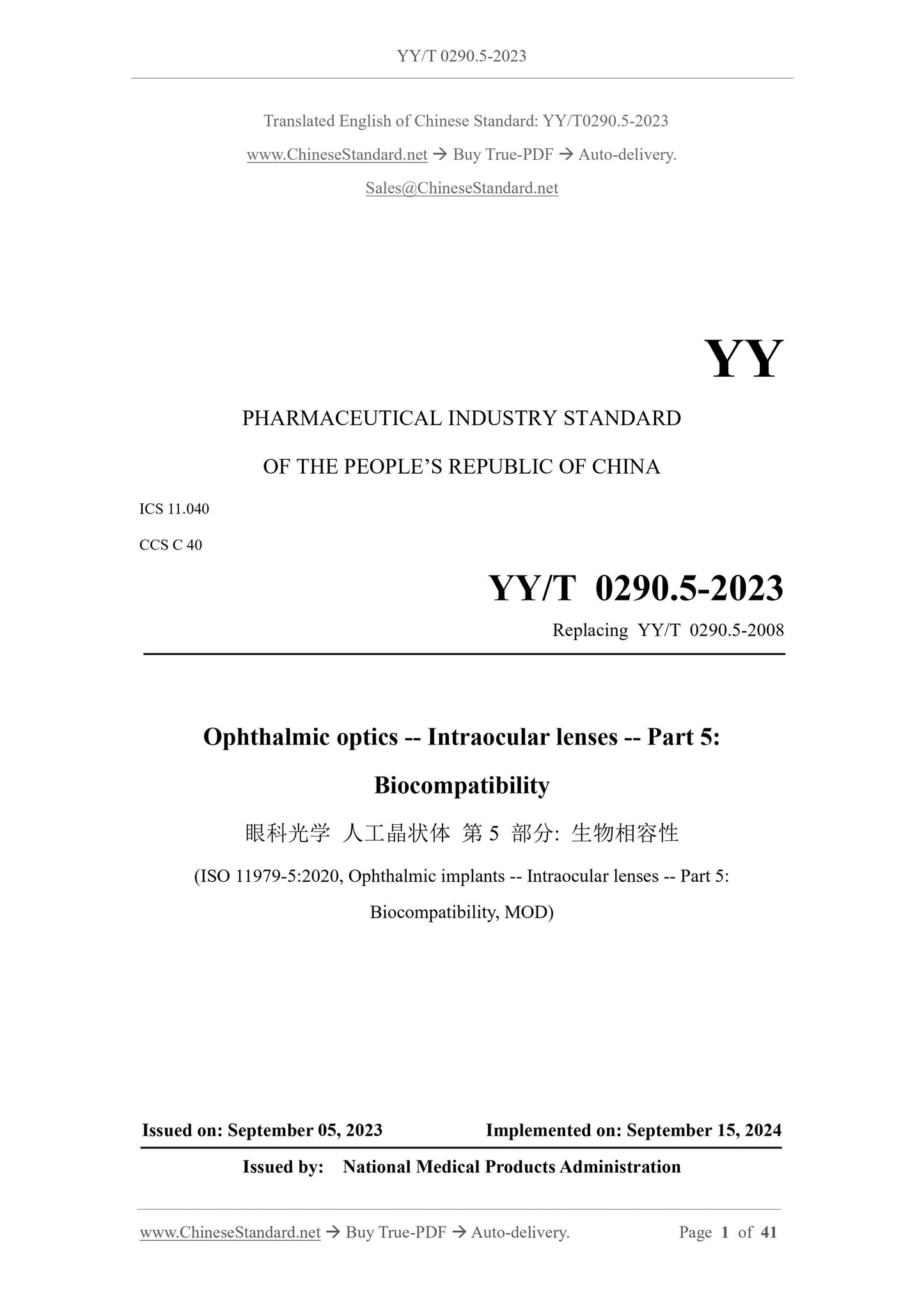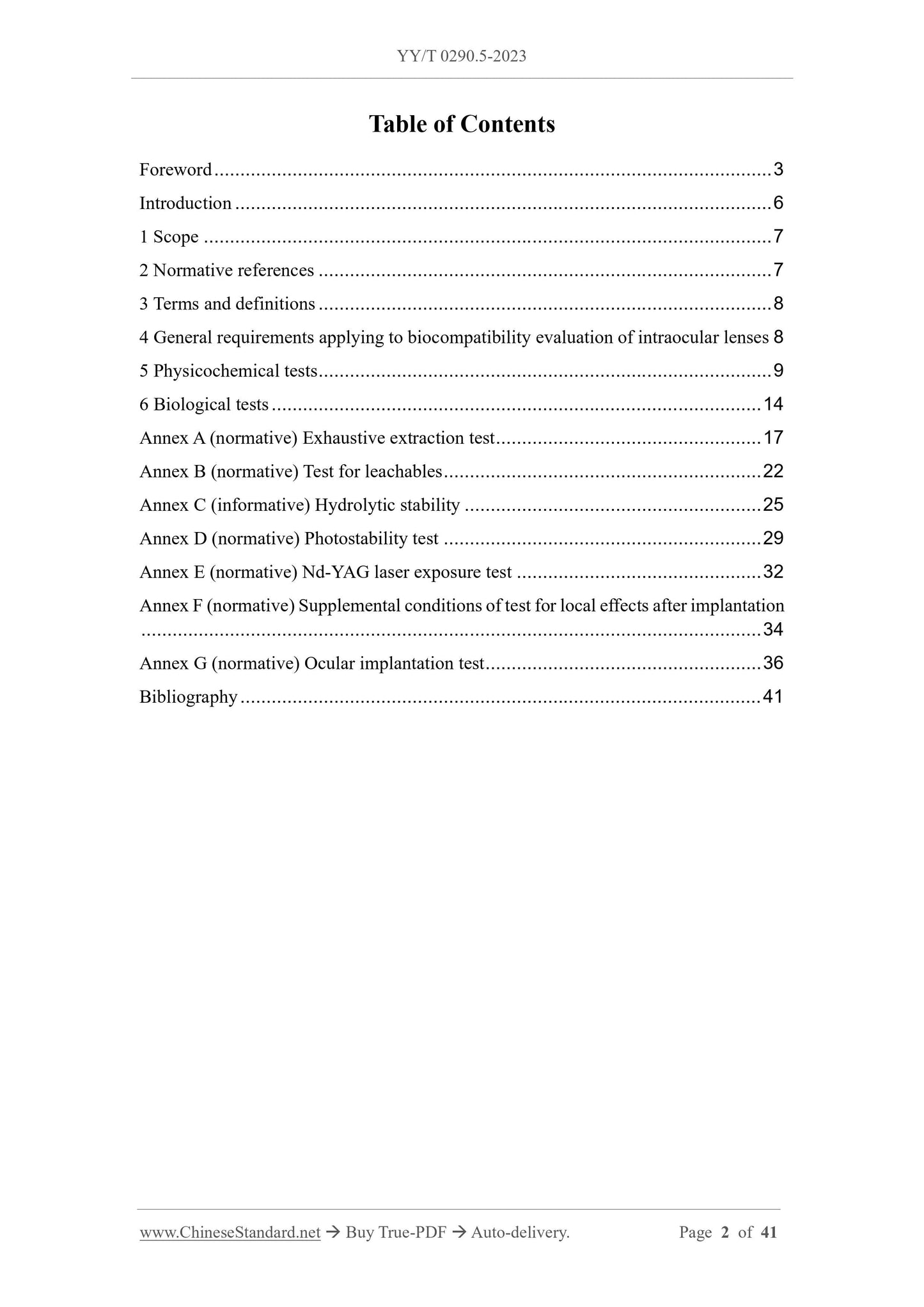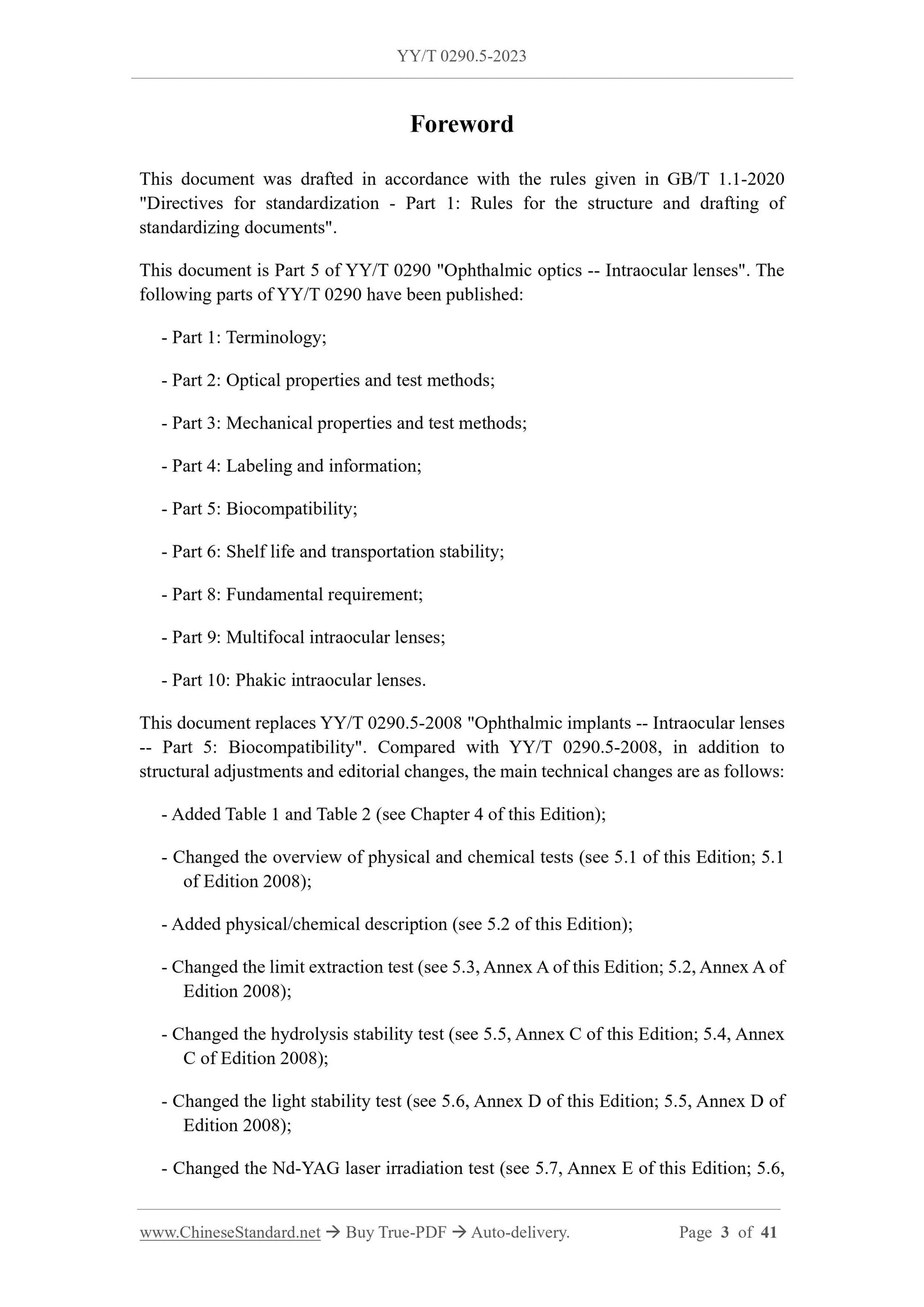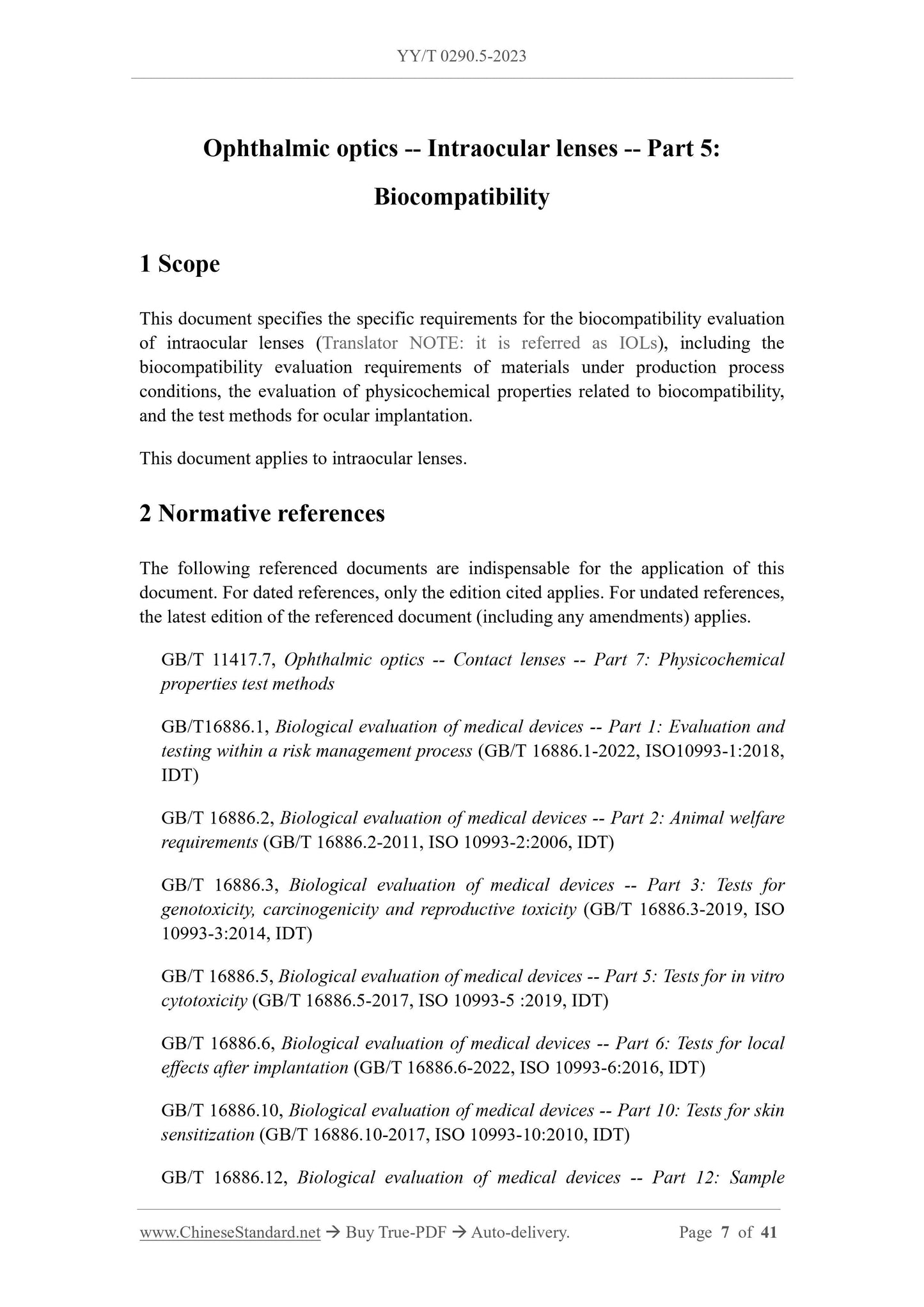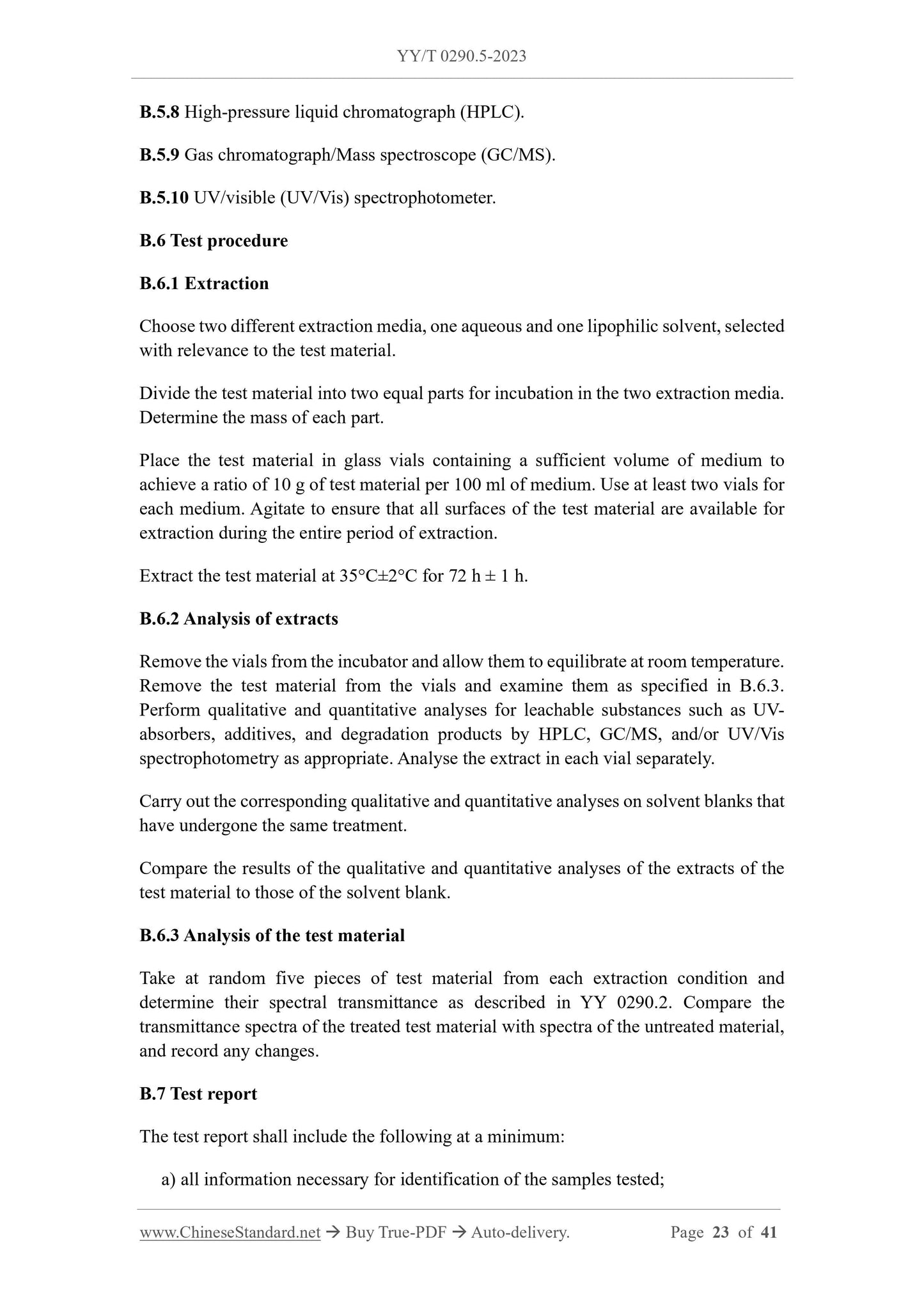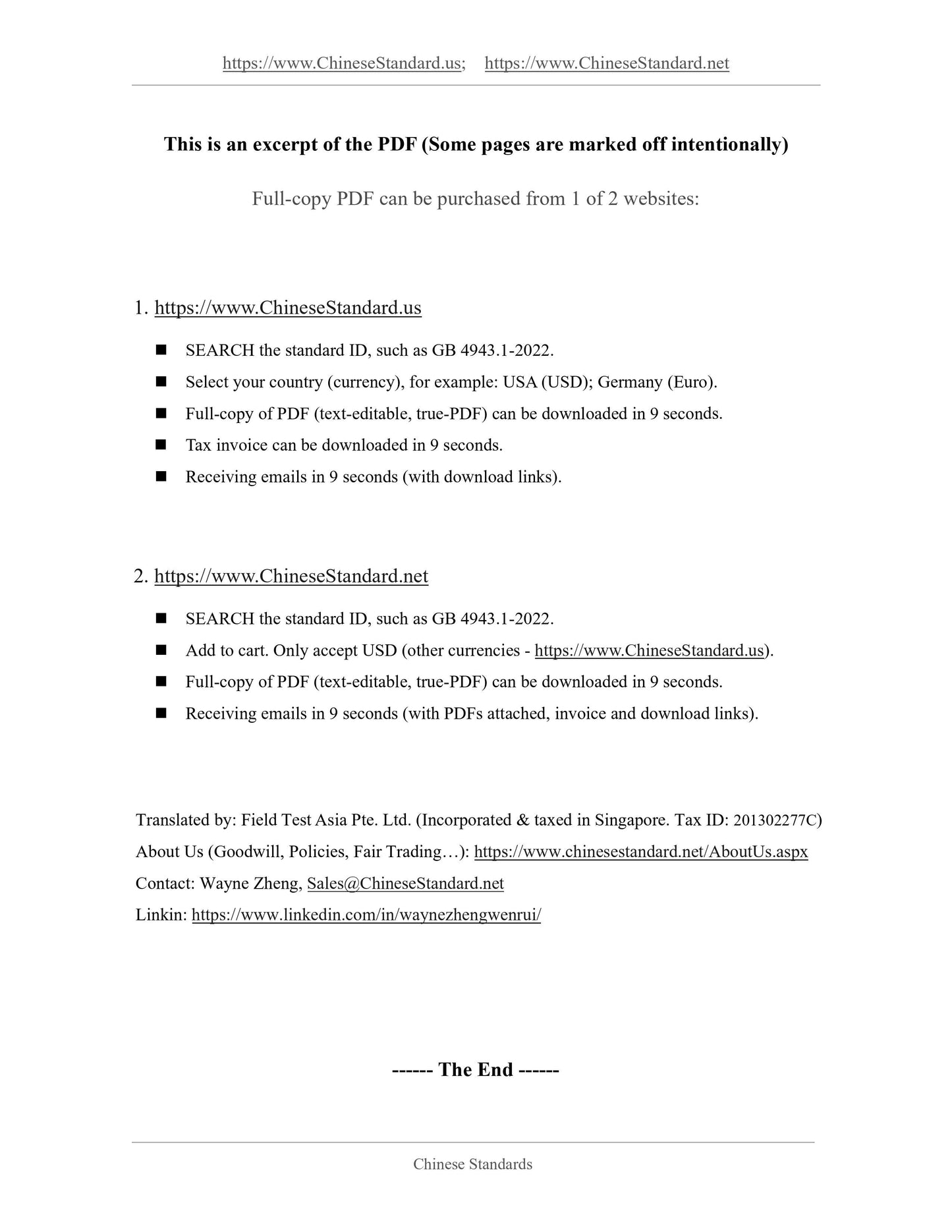1
/
of
6
www.ChineseStandard.us -- Field Test Asia Pte. Ltd.
YY/T 0290.5-2023 English PDF (YY/T0290.5-2023)
YY/T 0290.5-2023 English PDF (YY/T0290.5-2023)
Regular price
$350.00
Regular price
Sale price
$350.00
Unit price
/
per
Shipping calculated at checkout.
Couldn't load pickup availability
YY/T 0290.5-2023: Ophthalmic optics - Intraocular lenses - Part 5: Biocompatibility
Delivery: 9 seconds. Download (and Email) true-PDF + Invoice.Get Quotation: Click YY/T 0290.5-2023 (Self-service in 1-minute)
Newer / historical versions: YY/T 0290.5-2023
Preview True-PDF
Scope
This document specifies the specific requirements for the biocompatibility evaluationof intraocular lenses (Translator NOTE. it is referred as IOLs), including the
biocompatibility evaluation requirements of materials under production process
conditions, the evaluation of physicochemical properties related to biocompatibility,
and the test methods for ocular implantation.
This document applies to intraocular lenses.
Basic Data
| Standard ID | YY/T 0290.5-2023 (YY/T0290.5-2023) |
| Description (Translated English) | Ophthalmic optics - Intraocular lenses - Part 5: Biocompatibility |
| Sector / Industry | Medical Device and Pharmaceutical Industry Standard (Recommended) |
| Classification of Chinese Standard | C40 |
| Classification of International Standard | 11.040 |
| Word Count Estimation | 30,344 |
| Date of Issue | 2023-09-05 |
| Date of Implementation | 2024-09-15 |
| Older Standard (superseded by this standard) | YY/T 0290.5-2008 |
| Issuing agency(ies) | State Drug Administration |
| Summary | This standard specifies special requirements for biocompatibility evaluation of intraocular lenses, including requirements for biocompatibility evaluation of materials under production process conditions, evaluation of physical and chemical properties related to biocompatibility, and ocular implant test methods. This standard applies to intraocular lenses. |
Share
